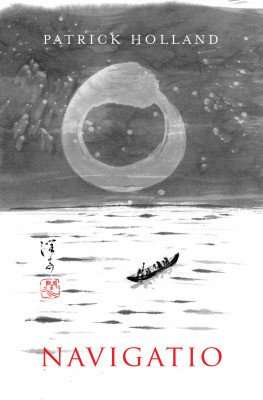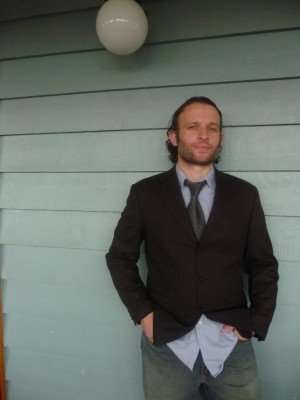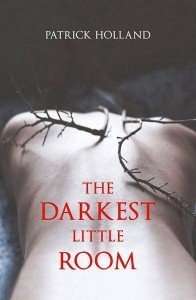Interview – Patrick Holland, author of Navigatio
Today we welcome Patrick Holland, author of the recently released title Navigatio to Booklover Book Reviews.
 Navigatio tells the story of Saint Brendan of Clonfert, a sixth century monk and adventurer, and his legendary quest for the Isle of the Blessed via a gauntlet of monsters, devils, angels, prophets and beautiful maidens. Brendan’s battles with the sea and the cosmos bear out what William Faulkner once called ‘the human heart in conflict with itself’.
Navigatio tells the story of Saint Brendan of Clonfert, a sixth century monk and adventurer, and his legendary quest for the Isle of the Blessed via a gauntlet of monsters, devils, angels, prophets and beautiful maidens. Brendan’s battles with the sea and the cosmos bear out what William Faulkner once called ‘the human heart in conflict with itself’.
This haunting parable of darkness and light, of temptation and belief, of voice and silence, is told with the utmost economy of words, making it a small masterpiece of compassionate perception.
Illustrations by Junko Azukawa
Hardback with jacket 205mm x135mm, published by Transit Lounge
What inspired you to write Navigatio?
There is never a single inspiration. I always write about journey, transience. So there is that. And I’ve lately been inspired by Japanese art’s employment of generative silence, particularly in that country’s recent ‘ambient’ fiction, which allows maximum reader involvement in the work. So to the reader creates their own experience to a large extent. Then, the novel is essentially an Irish Imram, or ‘sea journey tale’. I redux, with a fair amount of license, the medieval Navigatio Sancti Brendani , which concerns St Brendan’s voyage in search of Paradise. I wanted to redux a medieval work as I am fascinated by the medieval attitude to authorship … the notion of a literary work as a living, organic thing – something scribes/redactors can add to, shape, rather than an ossified statement of a particular genius, as we have come to view it. Medieval writers would have an automatic sympathy with the way composers and producers of electronic dance and ambient music work today, but I’m sure they’d find our culture of literary production baffling, even stifling.
 Would you say Navigatio is plot or character driven?
Would you say Navigatio is plot or character driven?
Neither. Like all my work, it’s language driven. Joyce said it was all about getting “the right words in the right order”. That has always been my focus. Nothing in the craft excites me more than the hunt for that elusive beast: the perfect sentence. If a writer writes, ‘boat’. It’s perfect, and poetic. Every reader brings their history of poetic and experiential associations to the word. Someone like Aram Saroyan would no doubt consider the word a complete poem, and to an extent I agree with him. But even so, the stakes are relatively low. The more words you add to the single term ‘boat’ the more chance you have of failure, of making a confusion rather than a poetic concept. But, that said, with the additions comes the small but real chance of bringing some authentic and previously unspoken poetry into the world, of giving birth to a new colour in the human soul.
Tell us a little bit about your main character.
Ostensibly, it’s St Brendan of Clonfert. But we know so little about him. Certainly I am not a scholar of his life. The character might be thought of as an avatar of that type of person who is restless, who travels and seeks something he cannot even name most of the time, for reasons he cannot explain.
What type of reader do you think would most enjoy Navigatio?
I hope absolutely anyone could come to the book and find something worthwhile. I’ve tried to write it as simply as I can. There are lovely sumi-e ink paintings by Junko Azukawa scattered through the pages. I hope it’s a nice object to look at and hold if nothing else.
 How does this title compare to others you have written?
How does this title compare to others you have written?
As I say, I always write about journey and transience. In almost all my books, there is something lost or in danger, that the protagonist fails to protect. This book, I think, is not so much about failure. In The Mary Smokes Boys the protagonist failed utterly to protect those things – particularly those people – he should have; in The Darkest Little Room there was what you might call a qualified victory. The same goes for Navigatio.
 Stylistically, this book has more in common with The Mary Smokes Boys than what I’ve written since. It’s minimal. But this time I’ve deliberately employed repetitions, at the line level, like Georgian composer Giya Kancheli who recycles certain musical phrases across whole works. But also at the chapter level. I hope this gives the reader a constant sense of being in an ‘almost familiar’ place, with just enough uncertainty to keep journeying. Many of the vignette chapters revisit the same situations. I hope this will feel like a number of medieval scribes have had a go at writing a particular incident in the journey, and a compiler has collected them all, rather than edit them together or choose one.
Stylistically, this book has more in common with The Mary Smokes Boys than what I’ve written since. It’s minimal. But this time I’ve deliberately employed repetitions, at the line level, like Georgian composer Giya Kancheli who recycles certain musical phrases across whole works. But also at the chapter level. I hope this gives the reader a constant sense of being in an ‘almost familiar’ place, with just enough uncertainty to keep journeying. Many of the vignette chapters revisit the same situations. I hope this will feel like a number of medieval scribes have had a go at writing a particular incident in the journey, and a compiler has collected them all, rather than edit them together or choose one.
Can you tell us a bit about your writing process?
Research is, of course, necessary in a book like this. The less a writer has to do, though, the better. You can’t let a work of fiction become a manual. In fact, the quickest way to let on that you know nothing about a topic is to over explain it – and too much research can lead to that. Ask a shipwright how a ship is made and they’ll summarise it for you in two or three sentences. As for the daily writing process, when I’m lucky enough to be able to do it, I approach it like a blue collar worker. I don’t wait around for inspiration. I’ll wake up and write till lunch, then have the rest of the day off and start again after dinner. I’ll put a couple of hours in then, often listening to music, and with the occasional ‘clarifying’ ale.
Do you have any other titles in the pipeline?
My next book is novel about the final days of one of the last, possibly the very last, Australian bushranger, whose stomping ground was the country I grew up in in Western Queensland. Then I have a very ‘ambient’ novel I’m working on set in a variety of locations in big city Asia. More distantly, I have a book of comic short stories I’d like to compile, about the exploits and adventures of accountants (real and fictional). I’m calling it The Health Benefits of Cocaine.
Do you have any tips or advice for aspiring writers?
There’s still time to become an investment banker.

BUY THIS BOOK:
Booktopia (Aus) | Transit Lounge
Patrick Holland is the award-winning author of The Source of the Sound, The Mary Smokes Boys, Riding the Trains in Japan and The Darkest Little Room. He lives in Brisbane, Australia. More at www.patrickholland.com.au
